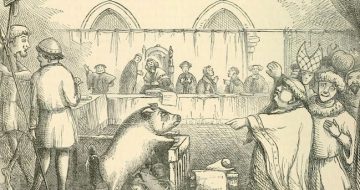NFTs have become an unlikely innovator in the art world; Bristol University student William Holmes explains why intellectual property law may have to respond

In his 1928 work La conquête de l’ubiquité, Paul Valéry noted: “we must expect great innovations to transform the entire technique of the arts, thereby affecting artistic invention itself and perhaps even bringing about an amazing change in our very notion of art”. NFTs (non-fungible tokens) have become an unlikely innovator in the art world.
NFTs are a method of tokenising an asset, where a token is a digital unit of value recorded on a blockchain. These tokens can represent a variety of things and obey different rules. The nature of a token depends on the standard (a set of rules decided by developers) that is applied to it. Popular standards include the ERC-20 standard for fungible (something that is not unique and therefore divisible) tokens on blockchain Ethereum’s infrastructure, whilst the ERC-721 standard is often used for non-fungible (unique) tokens. Here’s a useful video that provides some more information on NFTs.
An ‘authentic’ digital canvas
So, how can NFTs be applied in the art world? Digital art is attached to an NFT which is minted online and then traded in a variety of marketplaces. NFTs have had two important effects. First, they have provided a sense of ‘authenticity’ to digital art. Second, they have created a potentially useful online canvas for digital artists to share a new genre of performative artworks.
Because NFTs are unique tokens, they provide a sense of authenticity to digital art in a copy-and-paste internet world. Ever since the Renaissance’s cult of individualism, as theorised by Jacob Burckhardt, authenticity has played an important role in art. Before the Renaissance, as Alexander Nagel has argued, forgery of an artwork did not exist because a work’s value did not stem from its originality and authenticity. It is only in the Renaissance that artworks could be considered deficient if they were not the ‘authentic’ product of a certain artist. The artist had suddenly become an important quality of the artwork.
NFTs encode this sense of ‘authenticity’. Therefore, if you find some of the recent valuations of NFTs absurd, it is the fault of the marketplace for art, not NFTs. It is this ideology of valuing a work on its creator’s reputation rather than on the artwork’s aesthetic value alone that has seen NFTs of Jack Dorsey’s first tweet being valued at $2.5 million (£1.8 million), a video of Banksy’s work Morons being burnt selling for $380,000 (£272,000) and the digital artist Beeple’s collage ‘Everydays: The First 5000 Days’ selling for a record-breaking $69.3 million (£50 million) yesterday.
just setting up my twttr
— jack (@jack) March 21, 2006
Because NFTs can provide an aura of authenticity for digital art, they have become an ideal canvas for digital artists to create a new type of performative digital art. Consider Jack Dorsey’s NFT tweet. It is just a screenshot of his tweet, something that anyone can make and therefore has little value. So, what makes it art? Is it inherent to the tweet itself? Or did Jack Dorsey become an artist (and his tweet art) when he created the NFT of his tweet? Is the act of selling his tweet an artistic performance that can be qualified as art?
This issue cannot be definitively settled, but I am inclined to agree with the argument that considers minting an NFT as an artistic performance (the digital equivalent of when Marcel Duchamp signed a urinal “R. Mutt” and placed it in a context where it could exhibit an artistic aura). Regardless of your opinion, it certainly adds an interesting twist to the “can you copyright a tweet?” debate. With such a broad range of NFT art (take a look at what’s on offer), it will be interesting to see if copyright is given an equally broad scope.
Want to write for the Legal Cheek Journal?
Find out moreGet me a lawyer!
The utility of NFTs regarding intellectual property (IP) rights, however, seems far less convincing. The problem is that owning an NFT does not automatically grant you ownership of an original work. From a copyright perspective, an NFT is just a digital receipt indicating that you own a version of a work. Buyers’ perceptions about what they own do not necessarily meet the legal reality and companies involved in these transactions are not transparent.
As scholar Catalina Goanta has pointed out, Decentraland (a virtual world where land is represented in NFTs) has contradictory statements about the IP rights of its NFTs. It claims that it is a “virtual world owned by its users”. However, according to Article 12.1 of its Terms of Use, Metaverse Holdings Ltd (the company that provides Decentraland users with many important features) owns “all title, ownership and Intellectual Property Rights” on the site.
This lack of clarity over buyers’ IP rights has not stopped users spending millions on virtual land NFTs, with some suggesting that it could be at the forefront of a virtual real estate boom in the near future. Dapper Labs Inc., the Canadian company behind the first popular use of NFTs CryptoKitties, has done the most to resolve these IP issues by creating an NFT License. Drafting issues aside, this goes some way towards making buyers realise they are not purchasing the copyright but just a form of licensed content.
New intellectual property?
Whilst legal scholars have been quick to point out the legal holes in NFTs, we should not ignore the cultural and technical novelty of these unique tokens. Although IP rights are few and far between for NFTs, IP law may have to respond to the consequences of this NFT craze.
There could be significant benefits for artists who want to maximise their profits from the use of their work. As discussed earlier, artists can choose to mint their NFT according to different standards. Therefore, if you wanted to receive royalties whenever the rights to your work was used, you would opt for a token that laid down such rules (as it happens the ERC-1190 standard does this). And, as Valéry predicted, innovation could change our understanding of what art is and therefore what does and does not deserve copyright protection.
It remains to be seen whether NFTs will live up to their hype. Regardless of whether the future is a world with a developed NFT art market or angry crypto art collectors litigating for a violation of consumer protection (or both!), there will likely be some interesting legal issues on the way.
William Holmes is a penultimate year student at the University of Bristol studying French, Spanish and Italian. He has a training contract offer with a magic circle law firm.




Please bear in mind that the authors of many Legal Cheek Journal pieces are at the beginning of their career. We'd be grateful if you could keep your comments constructive.